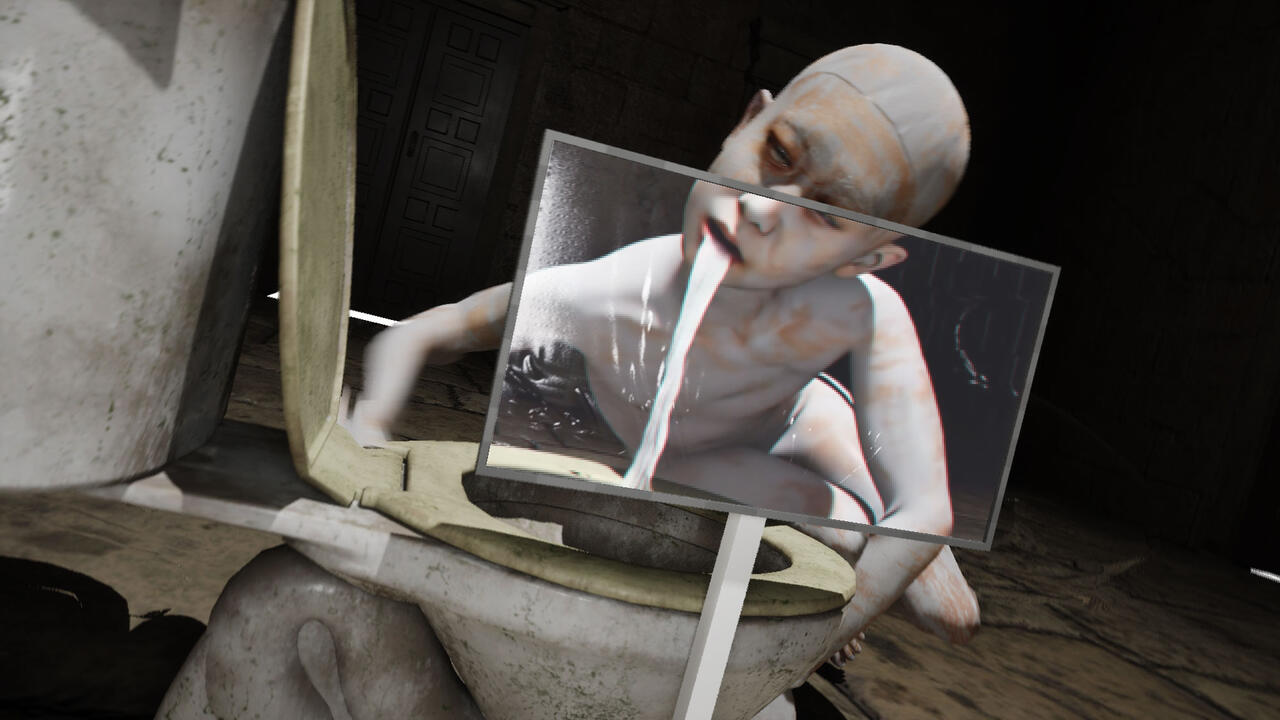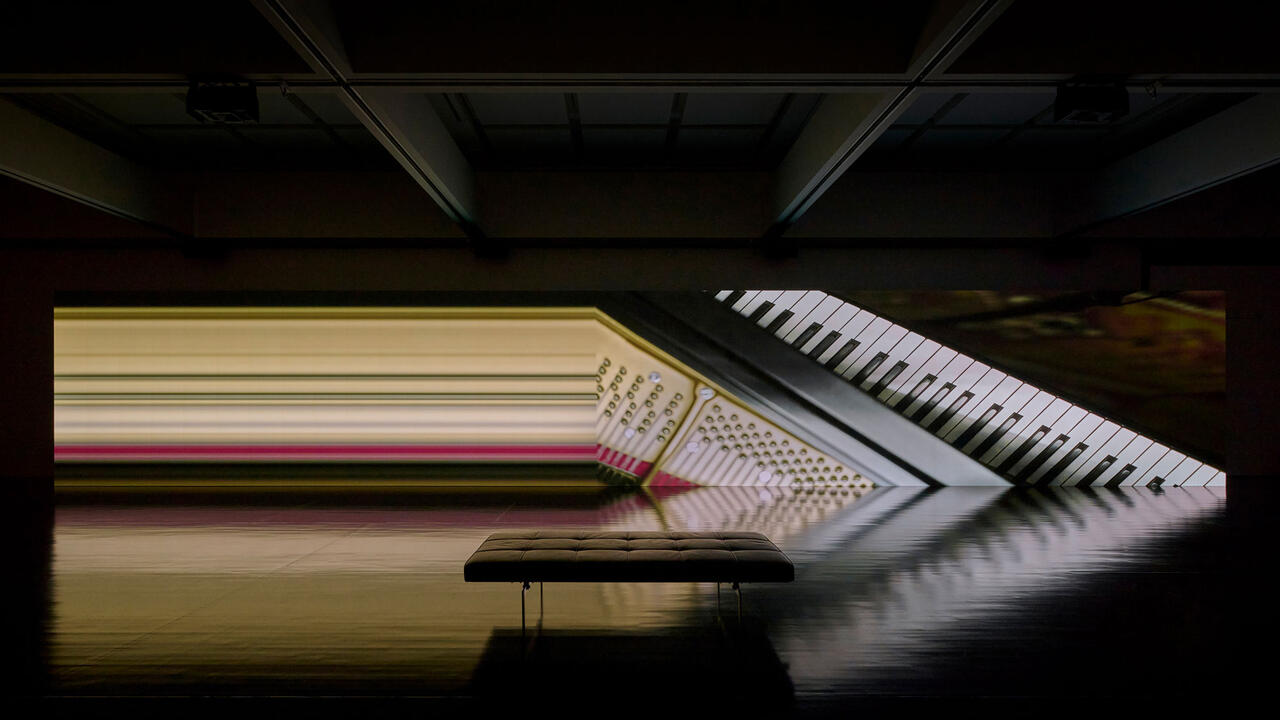More Than A Game
What live-action role play can teach us about artistic participation
What live-action role play can teach us about artistic participation

‘Don’t hate the player, hate the game.’ Or so the saying goes. The problem is, the two are completely codependent: just as the rules of the game condition the player, the players create the game by simply consenting to play. Games, insofar as they require participation to function, are always collectively authored.
Perhaps more than any other type of participatory practice, live-action role play, or ‘larp’, foregrounds this reciprocal relationship. Larp challenges players not only to conceptualize but also to experience the way that mutually created fictions – games or otherwise – shape and are shaped by the values of the participants.
What is larp? A shortcut definition might be improvisational theatre without an audience. Yet, while theatrical techniques have played a part in its development, so have historical re-enactments, group-therapy situations and strategy games of all kinds. The most commonly cited precursors to larp – and what you’re likely envisioning – are Dungeons & Dragons (1974) and other 1970s tabletop games, from which players began to construct improvisational narratives, eventually inhabiting their characters and leaving the proverbial basement altogether.
Some larping fits with the lineage of nerds bashing each other with rubber swords (known as ‘boffering’), but among other forms that evolved simultaneously, another distinct strand emerged, now codified as Nordic larp for its origins in northern Europe. Also known as progressive larp, Nordic larp stretches the notion of gamification – sometimes beyond recognition. Winning and losing is often beside the point. In fact, playing to lose is sometimes an explicit goal.
Nordic larps range from historical re-enactments to simulations of future dystopias to total abstractions. Famous examples include Ground Zero (1998), a 30-hour larp that set 21 characters within a 1960s-era nuclear war scenario; Europa (2001), which saw players act out a hypothetical breakdown of Scandinavian politics and an ensuing refugee asylum crisis; and a 2004 ‘art larp’ called Luminescence, in which participants waded through hundreds of kilos of flour as a metaphor for the inevitability of death.
Aspects of larp design are increasingly relevant to the realm of commercial user experience and interaction design – evidenced perhaps most literally in Disney’s upcoming immersive larp resort, Star Wars: Galaxy’s Edge – but they are also potent political and educational tools. In 2012, Norwegian NGO Fantasiforbundet founded The Larpwriter Summer School in collaboration with Belarusian educational organization POST, which allows international participants to experiment freely with different social systems and democratic decision-making processes through role play. Østerskov Efterskole, a boarding school in Hobro, Denmark, teaches its curriculum entirely through larp.
Progressive larp is also formally distinct, in that each game is designed to address specific questions about human (group) behaviour. Unlike ‘traditional’ larps, which are iterative (players might return to enact the same wizard for decades), Nordic larps are evolutionary, their rules constantly recalibrated. And given the potential for psychologically or even physically trying material, an array of in-game safety mechanisms has been engineered. Some examples remain highly specific, such as uniquely designed ways to safely simulate sex, while others have entered general usage. One such tool is a simple ‘OK’ hand signal, which players can flash at each other in-game to check that a simulation of violence isn’t getting too real.
The necessity for such innovations might sound self-evident, but only very recently have they been incorporated into more traditional forms of role playing. It’s no accident that, in contrast to many gamer-worlds, Nordic larp circles tend to be more diverse in terms of factors like gender and race. This diversity says everything about the way game mechanics create their constituents. Given the increasing awareness of toxicity and discrimination in game culture following a 2014 online harassment campaign known as Gamergate, a cadre of forward-thinking experience designers see this as a prescient moment to embed new value systems. The idea is to slowly transform the toxicity that results from anonymity and a lack of constraints into mutual accountability.
Art worlds, like all worlds, can be socially toxic. Nor are they exempt from the misogyny, racism, opportunism and oppression that plague other realms. But, while it’s becoming accepted that carelessly designed game content perpetuates destructive real-life situations and vice versa, the reciprocal causality between how artists relate to one another and the art they make is often treated as incidental or opaque.
Art-centric communities are typically described as by-products of a common interest or, conversely, as a group of friends who all happen to make artwork that has no bearing on their relationships. What would it mean to take the community surrounding the production as intrinsic to the work produced and, then, to foreground relational issues like consent, egalitarian decision-making and non-exploitation as part and parcel of the resulting work? What if art-world social problems were addressed through the work, rather than as separate issues? What are the ‘game mechanics’ of art and how might participant experience be calibrated so that, as in larping, more politically powerful content results?

Several artists working today draw explicitly from progressive larp concepts and practices in order to work toward these goals. For over a decade, Brody Condon has been developing collaborative role-play works in art contexts, where he is both creator and participant. His practice also incorporates psychotherapeutic approaches, such as Gestalt therapy, in which patients assume other roles in order to explore facets of the self. Collaboration with progressive larpers is central to his understanding of how to work with group dynamics in real time.
Other artistic practices mirror the sociality of larping without necessarily borrowing its vocabulary. Polish artist Wojciech Kosma’s The–Family (2011–ongoing) is an ever-changing ensemble of collaborators who develop patterns of improvisational movement and dialogue, over months of private sessions, which are then performed for audiences. Following an initially formalized introduction process, the participants develop relationships that extend far beyond the realm of production. Works by artists including Michael Portnoy, Tino Sehgal and the group Rimini Protokol might be understood within a similar framework.
Prolonged collective engagement is crucial here, and exploration of group dynamics often entails an emphasis on physical presence and embodied experience. The Danish artist Nina Runa Essendrop designs movement-based participatory experiences in theatre, art and larp worlds; in some of her scenarios, players can only communicate through physical expression. American artist Susan Ploetz also uses group experiences to extend the body to the body politic. In The Guild (first run in 2017), players learn and then role play somatic healing techniques as a mode of imagining nonverbal communication with an ‘alien’ other.
Larp theorist Johanna Koljonen points out that ‘schools’ of participation in both gaming and art have been entwined since the happenings and new-age sensory experiments of the 1960s. In her view, relational art and participatory gaming express a similar need to modulate the feedback loop between simulated and ‘real’ sociality and, I would add, between physical and psychological togetherness.
Art, like larp, is not just a game, but conceptualizing it as such might allow us to rewrite its rules.
If there’s one thing that relational art should have proven it’s that, as close as they may come, art and life are not actually the same. In fact, pretending their overlap is incidental or uncontrollable is precisely what allows toxicity and exploitation to continue. Why not explicitly examine this intersection in order to shape communal life? Not all art is participatory in form, but all of us who engage in the discourse are participants in a social construct. We have a responsibility to construct that construct: to design the game.
Art, like larp, is not just a game, but conceptualizing it as such might allow us to rewrite its rules. That’s a long-term undertaking. For now, remember: game mechanics are free to borrow. Next time you see a friend suffering from insecurity at an exhibition opening, try flashing an ‘OK’ hand signal. You’ve got nothing to lose.
Main image: Brody Condon, Future Gestalt, 2012, performance documentation at Los Angeles County Museum of Art. Courtesy: Brody Condon; Smoke, 1967 © Tony Smith Estate






















